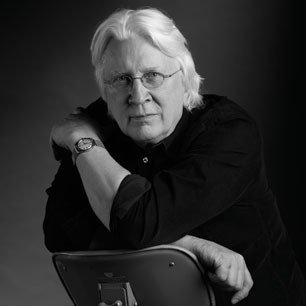The Rome Airport Hilton
Outside the entrance to the Rome Aiport Hilton stands the airport’s chosen corporate symbol, a bronze statue of Leonardo Da Vinci about ten metres high. The statue has DaVinci as a kind of hobbitized Galdalf—head out of proportion to the body, baseball mitt-sized hands, one of which he holds up, palm toward his face as if he’s got an inspirational speech written on it he can’t quite remember the key lines for. In the other hand he’s holding a whirly-gig on a stick, which no doubt illustrates some primitive principle of flight the airport’s designer board told the sculptor to include. The whirly-gig is—equally no doubt—based on a simplification of one of DaVinci’s cogitations, but in this world it’s likely also a paid pre-endorsement of some consumer invention that never got off the ground.
The hotel itself is about 150 metres away from the statue, but you can’t quite get to the statue from the hotel, because the statue stands in the middle of a traffic circle, surrounded on all four sides by asphalt and speeding cars and trucks. And unlike the statue, which will last at least thirty years before it needs to be replaced—it probably is meant to represent the principle of balance in flight (along with how primitive people used to be before the corporations took control and filled the world with black box technology)–the hotel is a monument to ICAD-based postmodernist utility, which is to say, to the swift cycle of short-term profit, and to the ersatz.
The hotel exterior predictably quotes several clichés of Italian/Roman architecture. Romanesque arches run diagonally up the walls, and are capped in terra-cotta brick likely no more than a few centimetres in depth. On the building’s lower side, white marble slabs are faked: prefab concrete painted bone white. Neither gesture fools the eye beyond a casual glance. To fake residential hominess, the glazing is broken up into 1.5 metre squares on the main floor, and in the rooms above, to a smaller grid.
The entire building is a sealed environment. The room windows don’t open, and the environmental controls you can manipulate are minimal: low/medium/high on the air conditioner, with no dimmers on the lights. That said, the controls loom anyway. The air conditioner hums, as do the high-efficiency fluorescents, the smoke detector blinks to remind you not to smoke or set the room on fire, and the nozzle high on the wall warns you that all your elecronics will get soaked if you do. The windows are double-glazed, sealed low E and set too high on the wall to look out of comfortably.
The entire building, broad-brush and in the details, reveals the priorities of the corporations it is meant to serve. It is, first of all, designed to be efficient to its owners. Hence the sealed air system, the faked building materials and built-in obsolescence—except in the main-floor areas where corporate business is carried on and where the marble splendour of the meeting rooms, bars, and lobby are conspicuous. The marble used isn’t noble marble, just beige enough to stain everything with the golden tonalities that come from back-lighting the marble with halogens.
It isn’t until one reaches the rooms that this fades. I guess one is supposed to be dazzled by then, or too drunk, either on bar scotch or corporate slogans, to notice that the marble in the bathroom and on the countertops is fake. But the reality is that the rooms are appointed so cheaply that you could be in a slightly uppity motel on the outskirts of Vernon, B.C. and not know the difference.
This is only disorienting if you’re paying attention—and haven’t yet realized that this is the cultural goal of the corporations: to land you nowhere, even when you’re at the airport of one of the world’s most particular cities.



